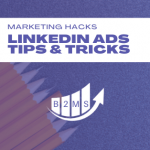Real Time Bidding 101
What is Real Time Bidding?
Real Time Bidding or RTB for short is an essential part of Programmatic Advertising. Through Real Time Bidding, digital advertising slots are bought and sold, and placed in real-time. RTB replaces directly sold ad spaces in online marketing.
While a website loads, an RTB auction for ad impressions takes place in milliseconds in the background in the ad server. The winner of the auction then places his digital ads.

How does Real Time Bidding work?
Real Time Bidding can be very complex. We try to make it as simple as possible. The whole process is done in the background while a website is loading, in about 100 milliseconds or less.
- A website visitor visits a publisher’s site
- The publisher notifies its ad server that a particular page with an ad impression is available and requests an ad.
- The ad server collects all available information such as browser, IP, or received cookie data and sends it to an ad exchange or SSP (Supply Side Platform). [Ad Exchanges and SSPs are technically different but have the same purpose in this process. We will only mention the SSP in the following]. In addition, the ad slot position of the impression on the page, format, and minimum bid are transmitted.
- The SSP sorts the request and, if applicable, sends it on with other existing data about the user and performs an auction.
- During the auction, DSPs (Demand Side Platform) can place bids for their advertisers. Beforehand, the DSP sorts the request and, if applicable, also adds further data.
- Based on the advertisers’ campaign criteria, the DSP submits a bid.
- All incoming bids are received by the ad server and the highest bidder is determined. Usually, the ad creative will be submitted with the bid.
- The ad server places the ad.
Additionally, there may be other platforms involved such as a DMP (Data Management Platform) or TradeDesks connected to the DSPs.
This process is used in display media buying. However, Real Time Bidding RTB also takes place with search or social media ads. Google Ads or Facebook Ads are also traded in real-time within the platforms using the RTB model.
Header bidding vs. waterfall model in programmatic advertising
Real Time Bidding mostly takes place in header bidding. Header bidding has largely replaced the waterfall model in programmatic advertising.
What is RTB header bidding?
Nowadays, header bidding is often used interchangeably with real time bidding, but this is not correct. Header bidding is a subset of RTB.
The term header bidding comes from the place where the bidding process takes place. A container code is implemented in the header of a website, which is triggered when a page is loaded.
In header bidding, all bids are obtained through Real Time Bidding and processed at the same time. It is a way to determine the actual highest bidder.
What is the waterfall model in programmatic advertising?
In the waterfall model or waterfall tag model, bids are sequentially considered in the ad server according to a predefined ranking order until a bid exceeds a minimum price, the so-called floor price. As soon as a bid is higher than the required minimum price, the bidder wins the real-time auction and is allowed to place the ad.
The problem with the waterfall model is that a publisher may leave money on the table. Let’s say the floor price is $5 CPM and three bids are solicited:
- Bid 1: $4.99
- Bid 2: $5.01
- Bid 3: $6.00
The first bid is rejected because it is below the minimum ask price. Then the second one is looked at. It is higher than the floor price and the auction is closed. The third bid with $6.00 is never considered.
In the waterfall tag model, SSPs or Ad Exchanges want to place their tag as high as possible in the waterfall. The higher a bidder is placed in the waterfall stack, the more bids are logically considered.
In header bidding, the 3rd bid would win the real time bidding.
However, the advertiser does not necessarily have to pay the full $6.00 for the ad placement. It is only the highest bid price.
First price auction vs second price auction
In First Price Auction, the exact bid price is used as the final price. In Second Price Auction, the next highest amount above the second-highest bidder is used as the final price. Usually this is one cent ($0.01) above the second-highest bid.
In our example (bids $4.99, $5.01, and $6.00) the third bid price wins in header bidding. In the First Price Auction pricing model, the ad impression costs the full $6.00. Whereas, Second Price Auction with line item increases by $0.01 will result in the actual cost of $5.02.
Anyone who has ever bid on eBay and entered a maximum bid has experienced the Second Price Auction model. In traditional auctions, on the other hand, the First Price Auction model is usually used.
Why is real-time bidding used?
The main advantage for advertisers is to buy target audiences on user level instead of publisher level at scale. Another advantage is that it requires less work and time. Before RTB, ads were sold directly. A media buyer negotiated directly with the publisher.
In the process, the publisher’s higher-level target audiences were bought. But now, with Real Time Bidding, users who fit the target group can be advertised to, no matter where they are on the Internet.

Sascha is a Lifecycle Marketing Consultant with over 8 years of digital marketing experiences in Silicon Valley, the UK, and Germany.
After leading the demand generation for a 100+ million company, he decided to venture out on himself. He’s now helping clients to attract and convert more leads and customers.
His main focus are SEO, paid media & marketing automation – all with the focus to tie marketing campaigns to revenue.
Sascha has been featured in industry publications.



